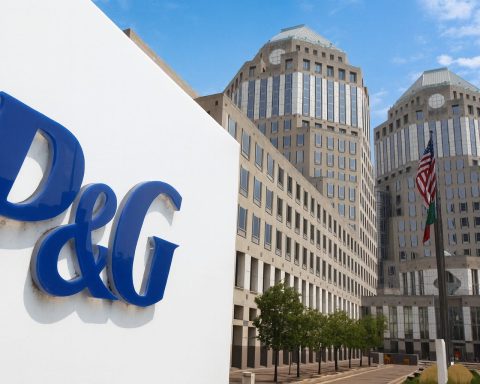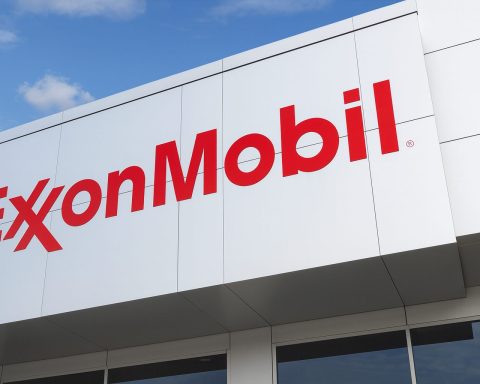- Worldwide selloff: Stock markets plunged globally on October 10, 2025 amid escalating U.S.-China trade war fears. Major indexes from Wall Street to Europe and Asia fell sharply in a synchronized rout [1] [2].
- Wall Street’s worst day since April:U.S. indices tanked. The S&P 500 sank 2.7% (−182.6 points) to 6,552 – its worst one-day drop since April [3] – while the Nasdaq Composite plunged 3.6% (−820 points) to 22,204. The Dow Jones shed 1.9% (−879 points) to close at 45,479 [4].
- Europe and Asia hit hard:European stocks erased weekly gains as the pan-European STOXX 600 fell 1.2% [5]. London’s FTSE 100 slid 0.9% to 9,427 [6], and Germany’s DAX and France’s CAC 40 each dropped around 1.5%. Asian markets also tumbled – Japan’s Nikkei 225 lost 1%, Hong Kong’s Hang Seng Index dove 1.7% [7] [8] – amid broader fears of an “AI bubble” unwinding.
- Tech stocks battered: High-flying tech shares led the crash. The tech-heavy Nasdaq 100 index nosedived 3.5% [9]. Chipmaker AMD plunged 7%, and Qualcomm fell 7.3% after China launched an antitrust probe [10]. U.S.-listed Chinese tech giants like Alibaba and Baidu sank 5%+ [11], and EV leader Tesla slid 2%. Rare-earth mining stocks surged in contrast (e.g. MP Materials +11% [12]) as investors bet on supply disruptions amid the trade rift.
- Flight to safety: Investors flocked to safe havens. Bond prices jumped (10-year U.S. Treasury yield down to ~4.05% from 4.14% [13]) and gold neared record highs around $4,000/oz [14] on haven demand. Oil prices collapsed ~4% to multi-month lows as war fears eased [15] [16]. Volatility spiked – the VIX “fear index” hit its highest level since June [17] – underscoring shaken investor sentiment.
From Record Highs to Sudden Crash
Only days before the rout, markets were basking in record highs. In fact, the S&P 500 and Nasdaq Composite set all-time peaks on Oct. 9 [18], capping a remarkable rally fueled by artificial intelligence (AI) euphoria and expectations of upcoming Federal Reserve rate cuts [19]. Even a U.S. government shutdown (ongoing since Oct. 1) had barely dented confidence – Wall Street shrugged off the political drama as tech stocks climbed relentlessly through early October [20] [21].
That optimism flipped overnight. By Friday, October 10, a cascade of bad news ended the “melt-up.” President Donald Trump’s shock tariff ultimatum – vowing a “massive increase” in duties on Chinese imports – rattled markets and erased weeks of gains in hours [22] [23]. The tirade, posted on social media, came out of nowhere and immediately triggered a “sell first, ask questions later” mentality on trading floors [24].
At the same time, China moved to tighten its grip on critical exports – expanding rare-earth mineral export controls and probing U.S. tech firms – sparking fears of supply chain shocks in everything from semiconductors to electric vehicles [25] [26]. Trump even canceled a planned summit with China’s President Xi Jinping in retaliation [27], dashing hopes of near-term trade peace. This rapid escalation of “Trade War 2.0” caught investors off-guard and served as the immediate catalyst for the global selloff.
Markets in Freefall Worldwide
Within hours of Trump’s tariff threat, stock markets worldwide went into freefall. In New York, the Dow Jones Industrial Average plunged 1.9% (nearly 900 points) to 45,479, the S&P 500 slid 2.71% to 6,552 [28], and the Nasdaq Composite tumbled 3.56% [29] – marking the worst single-day declines since April for the latter two indices [30]. “All three major U.S. indexes sold off sharply” in a rapid reversal of the mid-week rally [31]. By the closing bell, U.S. stocks had wiped out their weekly gains, and the S&P 500 booked its biggest weekly drop since May [32].
The pain was global.European bourses plunged in sympathy: the broad STOXX Europe 600 index fell 1.2% [33], with Frankfurt’s DAX down ~1.5% and Paris’s CAC 40 down 1.5% on the day. London’s FTSE 100 slid 0.9% to 9,427 – pulling back from an all-time high notched just two days prior [34] [35]. Auto stocks were especially hard-hit in Europe (the Euro STOXX Autos sector sank ~9% for the week) amid worries new tariffs would slam demand [36].
Asian markets also suffered sizable losses. Japan’s Nikkei 225 slumped about 1% and the broader TOPIX index shed 1.9% as political uncertainty in Tokyo compounded the trade jitters [37] [38]. Hong Kong’s Hang Seng Index dropped 1.7% to around 26,290 – its fifth straight daily decline, leaving it down over 3% for the week [39]. Mainland Chinese indices fell as well (Shanghai Composite −1%, CSI 300 −2% [40]), reflecting both the U.S. tensions and China’s own tech crackdown. Not every market sank – notably South Korea’s KOSPI jumped +1.7% as it reopened from a holiday to play catch-up on earlier gains [41] [42] – but the overwhelming trend across continents was risk-off selling.
Tech and Trade Sensitive Stocks Hammered
The selloff’s epicenter was the technology sector, which had led 2025’s gains. Investors dumped high-valuation tech and AI stocks en masse, fearing they had become overheated. The Nasdaq 100 index (top tech and growth companies) nosedived 3.5% in one day [43]. Mega-cap stalwarts like Apple, Microsoft, Amazon and Google’s parent Alphabet – the “Magnificent 7” – all fell sharply, contributing to the Nasdaq’s rout. Chipmakers were particularly bloodied: the Philadelphia Semiconductor Index sank 6.3% [44], and chip stocks from Nvidia to Broadcom dropped ~2–3%. Advanced Micro Devices (AMD) was a standout loser at –7% [45], after a steep run-up earlier in the year left it vulnerable to a pullback.
Some of the day’s damage was directly tied to the resurgent trade war. When China’s regulator announced an antitrust investigation into Qualcomm, shares of the U.S. semiconductor firm plunged 7.3% [46]. U.S.-listed Chinese tech ADRs were slammed as well: e-commerce giant Alibaba sank about 5%, search leader Baidu fell 5.7%, and online retailer JD.com lost ~4–5% [47] [48] by the closing bell. In Hong Kong, Tencent and other Chinese tech names likewise saw 3–6% declines [49]. These moves reflect fears that China’s tech sector will suffer under stricter export curbs and U.S. sanctions, while U.S. tech firms face retaliation from Beijing – a lose-lose scenario for the once high-flying industry.
Other trade-sensitive sectors sank in tandem. Industrial giants and automakers fell on both sides of the Atlantic on worries that supply chains could be disrupted. In Europe, luxury carmakers like BMW and Ferrari slid, helping make autos the worst-performing European industry group for the week [50]. Manufacturing and consumer goods firms dependent on U.S.-China commerce likewise struggled, as traders braced for higher costs and slower growth if tariffs take effect.
Meanwhile, energy markets flipped into freefall, adding to the stock gloom. Crude oil prices cratered – U.S. benchmark WTI plunged 4.2% to ~$59, and international Brent crude lost ~3.8% to $62.73 [51] [52]. This oil slide was partly due to an unrelated surprise (a ceasefire in the Israel-Hamas conflict eased geopolitical risk premiums) [53], but also because tariff threats imply weaker global growth and fuel demand [54]. The oil slump dragged down energy stocks: in London, BP and Shell fell ~3% [55], and U.S. oil majors also declined.
One bright spot in the carnage: rare-earth mineral companies. As China’s export ban on rare earths raised the prospect of shortages, investors piled into Western suppliers. MP Materials jumped 11% (to ~$80) and USA Rare Earth rocketed +15% on the day [56]. These outsized gains underscore how the new trade war is picking winners and losers – companies seen as alternative sources for critical materials soared, even as the broader market sank.
On the whole, Friday’s session was a textbook “risk-off” move: nearly every major sector finished in the red, from high-growth tech to defensive dividend plays. Market breadth was overwhelmingly negative, with decliners swamping advancers on global exchanges. The suddenness of the downturn left traders and analysts grasping for comparisons – many pointed out that such a uniformly steep drop hadn’t been seen since the spring turmoil in April [57].
“Sell First, Ask Questions Later”: What Experts Are Saying
Seasoned market watchers described the day’s chaos as a wake-up call. “The two largest economies are arguing again, and we’re seeing a sell-first, ask-questions-later mentality to end the week,” said Ryan Detrick, chief market strategist at Carson Group, noting that Trump’s aggressive trade posturing “truly came out of nowhere” and unleashed “extreme volatility” after a long period of calm [58]. Indeed, prior to this week, U.S. stocks had been eerily steady – the S&P 500 had gone 112 straight trading days without breaking its 50-day moving average (longest since 2011) [59]. That uptrend has now been decisively broken.
Many analysts tied the plunge not only to trade headlines but also to excessive valuations and overconfidence that had built up. “Everything is priced for perfection, so uncertainty increases market jitters,” explained Gene Goldman, CIO at Cetera Investment Management, adding that any shock can “add uncertainty to economic growth” when stocks are priced beyond fault [60]. In other words, after a 20%+ year-to-date surge in tech-heavy indexes, markets had little margin for error – and the tariff shock exposed that fragility.
In fact, some prominent voices had been warning that a reckoning was overdue. Just a day earlier, JPMorgan CEO Jamie Dimon sounded alarms about a potential “significant correction” looming for stocks [61]. “I am far more worried about that than others,” Dimon told the BBC, citing geopolitics, heavy government deficits, and global conflicts as risk factors [62] [63]. He pointed to “a lot of things out there” – from war threats to “global remilitarization” – that markets were shrugging off [64]. IMF chief Kristalina Georgieva echoed that concern this week, cautioning that “lofty” stock markets could see large corrections and warning policymakers and investors “don’t get too comfortable” with the status quo [65]. Similarly, the Bank of England recently flagged that AI-driven tech stock valuations look “stretched” and could suffer a “sharp reversal” if the rosy growth assumptions behind them falter [66].
Those warnings seem prescient now. The frothiest corners of the market – like AI-related equities and speculative tech IPOs – were hit hardest in this pullback. “It’s a wave, and waves don’t go on forever; it will eventually crest and decline,” veteran portfolio manager Robert Pavlik said earlier, remarking on the unsustainable euphoria that had set in [67]. Friday’s action suggests that crest may have been reached, at least for the short term.
Still, not everyone is predicting doom. Some experts view this as a painful but healthy correction rather than the start of a prolonged bear market. “This is definitely a significant issue, and it could warrant a pullback, but I don’t necessarily see it derailing the AI theme that’s been driving the market,” argued James St. Aubin, CIO at Ocean Park Asset Management [68]. From his perspective, the fundamental innovations and profit potential of AI – a key driver of 2025’s rally – remain intact, meaning dip-buyers could re-emerge once trade war headlines settle. Indeed, the S&P 500 is still up about 11% in 2025 (even after this drop) [69], and the Nasdaq about 15% higher year-to-date, suggesting the overall bull trend hasn’t been fully broken yet.
Market strategists also note that October is historically volatile – famous for past crashes – so a bout of “spookiness” this month isn’t wholly unexpected [70]. “One could argue we were due for some October fright,” Detrick quipped, alluding to the market’s calm summer leading into a stormy fall [71]. The key question is whether this pullback is a temporary air-pocket or the start of a deeper downturn.
What’s Next: Outlook and Implications
Investors are now grappling with what this sudden crash means for the road ahead. The immediate concern is that escalating trade tensions could chill the global economy. If the U.S. follows through on new tariffs – and China retaliates in kind – it would likely “gum up global trade” and hurt growth, as lower trade volumes and higher import costs filter through [72]. Sectors from manufacturing to technology could see earnings hit by supply disruptions and pricier components. In fact, Wall Street banks are already warning that forthcoming corporate earnings may underwhelm if tariffs squeeze profit margins. Next week, several major U.S. banks kick off earnings season, and analysts expect trade-sensitive revenue softness to be a theme [73].
Another worry is inflation and central bank policy. Tariffs are effectively a tax on goods, potentially raising prices for consumers. Ironically, this comes just after the U.S. Federal Reserve cut interest rates in late September to support a slowing economy [74]. The Fed was widely expected to cut rates again at its meeting later this month, especially given cooling U.S. jobs data and benign inflation trends [75] [76]. Now policymakers face a quandary: a trade war could slow growth (arguing for more rate cuts), but it could also boost inflation on affected products (arguing for caution) [77] [78]. Fed Chair Jerome Powell has said they’ll “change course if inflation stays high” [79] – so the trajectory of tariffs and prices will be critical. Many in the market still expect the Fed to proceed with another quarter-point rate cut to help calm financial conditions [80]. Easier monetary policy could provide some cushion for stocks, as lower rates tend to support equity valuations.
Beyond the Fed, global policymakers will be under pressure to respond if volatility continues. In Beijing, officials may seek to stabilize Chinese markets (for instance, by easing domestic monetary policy or moderating the rhetoric) to avoid further capital flight. In Washington, the market fallout increases the stakes for the upcoming APEC summit in November – though Trump canceled a direct meeting with Xi, economic reality may yet push both sides back to the table. So far, neither the U.S. nor China has confirmed implementation of the threatened tariffs, leaving room for negotiation. Investors will be closely watching any back-channel diplomacy or conciliatory signals in the coming days. As one analyst noted, these tariff threats could be a negotiating tactic – but if they spiral, “the tone of [Trump’s] comments was certainly quite aggressive,” which has clearly spooked the market [81].
Market sentiment going forward is likely to be far more cautious. The shock of this drop has reminded investors that stocks don’t just go up in a straight line. Measures of fear are elevated (the VIX volatility index jumped to a four-month high [82]), and trading volumes spiked, indicating many players repositioning. We could see more choppy trading in the weeks ahead, especially as headlines on trade, politics, and earnings cross the wires. “Markets are bracing for a volatile fourth quarter,” observed one analyst, pointing to policy shifts and geopolitical risks that have yet to play out fully [83]. This includes not only U.S.-China relations but also European political turmoil (e.g. France’s government shake-up and debt concerns) [84] and potential aftershocks from conflicts like the Middle East war that, while cooling now, remain unresolved.
On the other hand, some silver linings could emerge. If the sell-off continues, it might ironically force faster resolutions to the very issues that caused it. A rattled White House might soften its stance if advisors highlight the risk to Trump’s beloved stock market metrics. Similarly, Congress could feel added urgency to end the government shutdown, which as of Oct. 10 is 10 days in and delaying key economic reports [85]. A budget deal to reopen the government would remove one source of uncertainty. And globally, coordinated messaging from central bankers – affirming readiness to stabilize markets – could help put a floor under sentiment.
In the medium-term, forecasts are split. Optimists argue that as long as interest rates are falling and recession is avoided, stocks can regain an upward trajectory once this trade spat is digested. They point to still-robust U.S. economic growth (GDP grew ~3.8% last quarter) and the promise of AI and tech innovation driving future profits [86]. Pessimists counter that this episode may be the start of the long-anticipated reckoning for an overextended market. High-profile warnings – from Dimon’s to the IMF’s – suggest more downside risk if investors remain complacent [87]. Valuations, especially in tech, remain stretched by historical standards, leaving room for further correction if earnings disappoint or if “unrestrained optimism” meets reality】 [88].
Ultimately, what happens next hinges on policy and psychology. If cooler heads prevail in the trade dispute and the Fed delivers support, the market could stabilize and even resume its rally into year-end. But if “Trade War 2.0” escalates unchecked, it could morph into a broader downturn. As JPMorgan’s Dimon advised, now is the time to “navigate any downturn proactively” [89] – in other words, hope for the best but prepare for tougher times.
For the average investor, the events of October 10, 2025 are a stark reminder that markets can turn on a dime. After a year of exhilarating gains, the sudden crash has injected a jolt of volatility and uncertainty. Caution and risk management are back in focus. In the coming days, watch for any easing or intensifying of the U.S.-China standoff, the tone of corporate earnings reports, and signals from central banks about intervention. Those will be the clues as to whether this swift global selloff is merely a hiccup – or the start of something more serious. As one market strategist put it: “It’s not the end of the world, but it is a wake-up call.” Investors and policymakers alike have gotten the message loud and clear.
Sources: Recent news reports and financial market data [90] [91] [92] [93] [94] [95] [96] (The Economic Times, Reuters, Bloomberg, AP, SCMP, ts2.tech and others).
References
1. www.reuters.com, 2. www.reuters.com, 3. www.reuters.com, 4. www.reuters.com, 5. www.reuters.com, 6. www.reuters.com, 7. moderndiplomacy.eu, 8. www.scmp.com, 9. www.bloomberg.com, 10. www.reuters.com, 11. m.economictimes.com, 12. m.economictimes.com, 13. apnews.com, 14. ts2.tech, 15. www.bloomberg.com, 16. apnews.com, 17. www.reuters.com, 18. www.reuters.com, 19. ts2.tech, 20. ts2.tech, 21. ts2.tech, 22. www.reuters.com, 23. www.reuters.com, 24. www.reuters.com, 25. www.reuters.com, 26. m.economictimes.com, 27. www.reuters.com, 28. www.reuters.com, 29. www.reuters.com, 30. www.reuters.com, 31. www.reuters.com, 32. www.reuters.com, 33. www.reuters.com, 34. www.reuters.com, 35. www.reuters.com, 36. www.reuters.com, 37. moderndiplomacy.eu, 38. moderndiplomacy.eu, 39. www.scmp.com, 40. www.scmp.com, 41. apnews.com, 42. apnews.com, 43. www.bloomberg.com, 44. www.reuters.com, 45. m.economictimes.com, 46. www.reuters.com, 47. m.economictimes.com, 48. www.scmp.com, 49. www.scmp.com, 50. www.reuters.com, 51. apnews.com, 52. apnews.com, 53. apnews.com, 54. apnews.com, 55. www.reuters.com, 56. m.economictimes.com, 57. www.reuters.com, 58. www.reuters.com, 59. ts2.tech, 60. www.reuters.com, 61. ts2.tech, 62. ts2.tech, 63. ts2.tech, 64. ts2.tech, 65. ts2.tech, 66. ts2.tech, 67. ts2.tech, 68. www.reuters.com, 69. www.reuters.com, 70. www.reuters.com, 71. www.reuters.com, 72. apnews.com, 73. m.economictimes.com, 74. apnews.com, 75. ts2.tech, 76. apnews.com, 77. apnews.com, 78. apnews.com, 79. apnews.com, 80. ts2.tech, 81. www.reuters.com, 82. www.reuters.com, 83. moderndiplomacy.eu, 84. www.reuters.com, 85. www.reuters.com, 86. ts2.tech, 87. ts2.tech, 88. ts2.tech, 89. ts2.tech, 90. www.reuters.com, 91. www.reuters.com, 92. www.reuters.com, 93. www.scmp.com, 94. www.bloomberg.com, 95. m.economictimes.com, 96. ts2.tech







